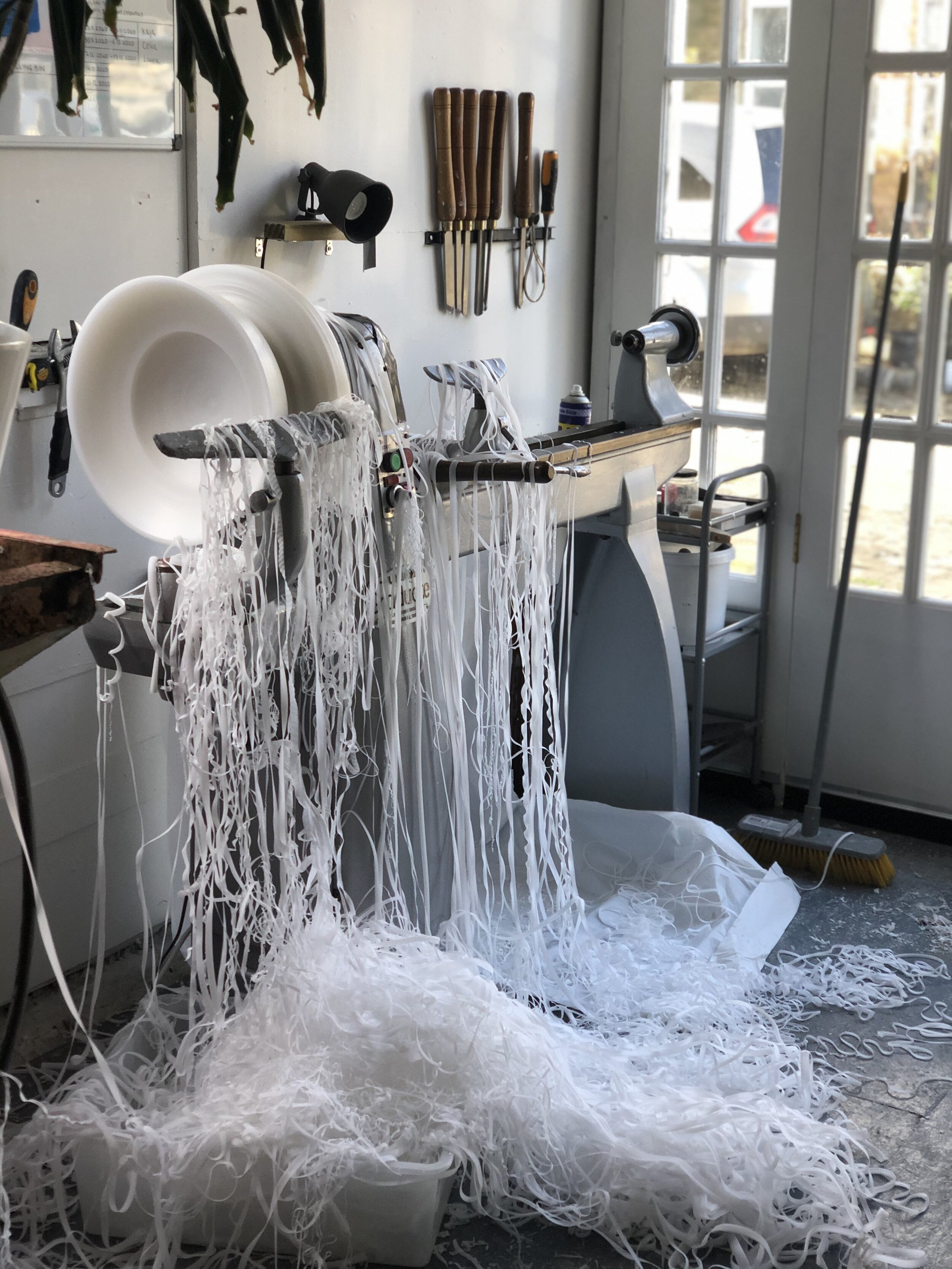Top: Celia Dowson, Rhossili Centrepiece in Orange. Above: Wax turning on a lathe in Celia Dowson's studio; photography courtesy of Celia Dowson
Meet the designers leading and industrial downsize…
By Sujata Burman, April 2021
“GOD, WHY ARE YOU MAKING SUCH BIG FORMS ON A JIGGER JOLLY?”
This is just one of the reactions artist Celia Dowson has had to her use of industrial equipment to make refined glass and ceramics. It became clear she was breaking with tradition when she was told her jigger jolly would have to be made-to-order, as one hadn’t been requested for 10 years. For the uninitiated, the jigger jolly is used for mass production of pottery – yet Dowson’s designs are very much naturalistic, limited-editions, far from industrial scale.
The risks are manifold when working with industrial equipment, something Dowson discovered when an accident caused her hand to get caught in a lathe (a rotating machine) during her BA. She took a five-year break, and when she decided to return to these inanimate collaborators, it was on her terms.
So, where did Dowson’s fascination with the industrial start? Well, she often visited family in South Africa in her younger years, where she spent a lot of time at her grandfather’s engineering studio. “There is something in construction and engineering, the precision and even the maths of making, which really engages me,” she explains. “I work within the equipment’s boundaries, but not within the boundaries created through industry.”
This method of making wasn’t always Dowson’s style. At university, she says she was reluctant to use machinery – relying instead on handcrafting for the most part – as she was nervous about her work being seen as industrial. However, her lightbulb moment came when she realised this machinery was the key to ensuring her pieces were entirely unique. “[Using industrial practices] allows me to make a surface that other people can’t make, because they don’t have the machine,” Dowson says.
With her bespoke, made-to-order jigger jolly, Dowson is able to interrupt its traditional purpose of making multiple pieces. Instead she forms her land- and sea-scape inspired vessels by marbling clay inside in the apparatus. “While it is spinning, I am throwing and adding water, creating marks and painting the inside of the mould. It is a strange way of using a piece of equipment, but it works.”
Other machines in her industrial roster include air tools, rociprolpas and lathes, elements of which are all embedded in the work Dowson creates. In a practical sense, the machinery is used to perfect finishes and speed up the process, while the physical movement – fast rotations pulling the clay to create a fading of colour – has become a crucial part of her designs.
On a creative level, the machinery is also imbued with the language of Dowson‘s style. For example, she compares using the lathe to sketching – she arrives at equipment with an idea and this evolves through the machinery. “It is through making that I realise things,” she explains.
“[Machines] can often allow for even more discovery in material properties because they work in a way which we literally can’t physically. It’s like having a second mind, one informing the other and vice versa.”
Applying, in exchange, glass-polishing techniques to her ceramics, Dowson’s explorations bring a fresh perspective to her materials of choice, underscored by deeply reflective observations of landscape and nature; creating pieces that shake up our perceptions and understandings of how a material behaves, broadening its storytelling capabilities.


